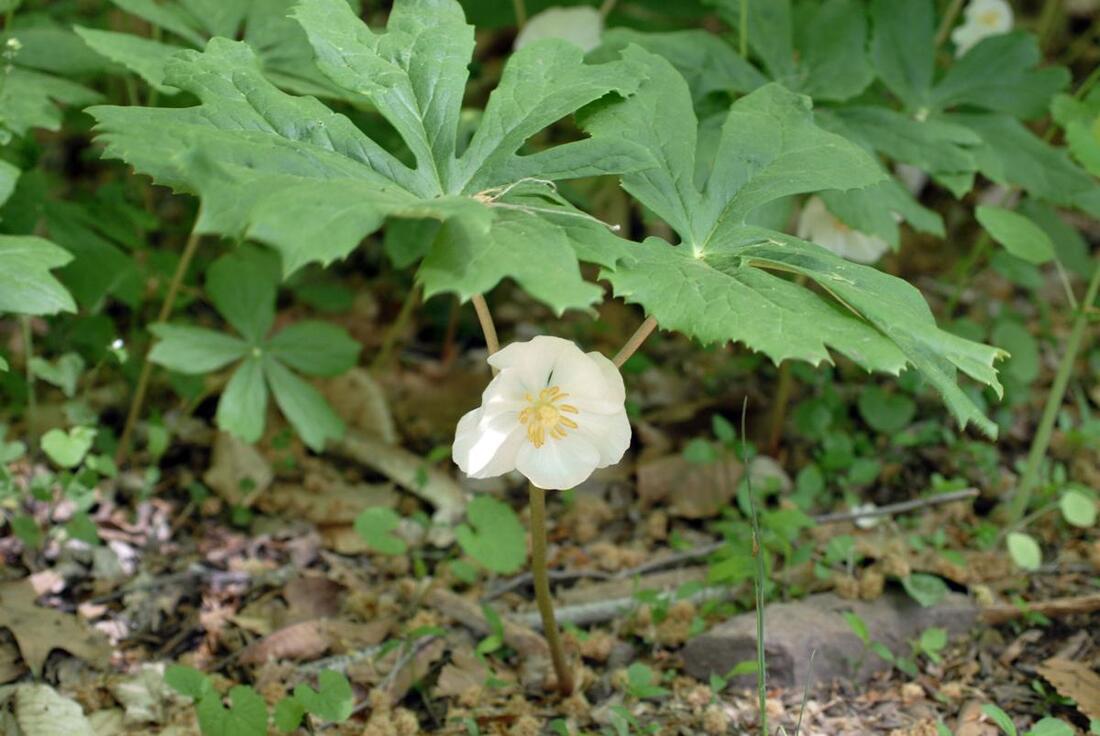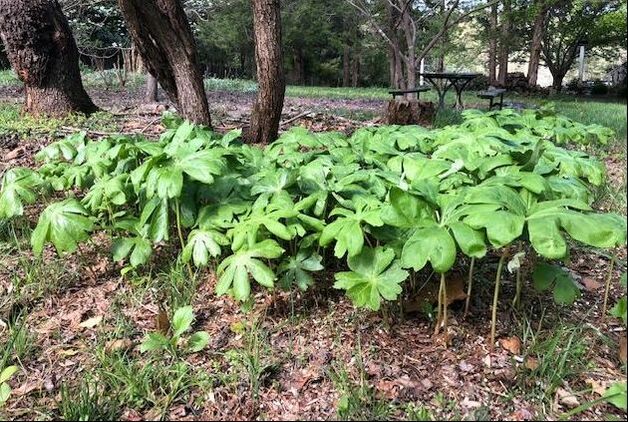Mayapple
Podophyllum peltatum
Mayapple is a native woodland plant that is widespread across most of eastern North America south to Texas in zones 3 to 8. Podophyllum peltatum is the only species in this genus in the barberry family (Berberidaceae). This herbaceous perennial typically grows in colonies from a single root in open deciduous forests and shady fields, riverbanks and roadsides. All the parts of the plant, except the fruit, contain podophyllotoxin which is highly toxic if consumed, but was used by Native Americans for a variety of medicinal purposes. Podophyllotoxin is an ingredient in prescription drugs.
The upright stems grow from a shallow, creeping, branched underground rhizome, composed of many thick dark or reddish-brown tubers connected by fleshy fibers and downward spreading roots at the nodes. Each terminal bud produces a shoot. The mostly unbranched 12-18 inch tall stems are topped with umbrella-like (peltate) leaves.
These native wildflowers are often grown as ornamental plants for their attractive foliage and flowers. They are perfect for naturalizing in a woodland garden or native plant garden. This plant is rarely used in borders, as it goes dormant in the summer, leaving a large gap that is difficult to fill, and does not like competition. This plant is apparently juglone tolerant so will grow under black walnut, and is not eaten by deer or rabbits.
Mayapple needs partial or full shade to thrive and prefers rich, moist soil with abundant organic matter. It can be propagated by division of the roots when dormant (in late summer or fall or very early spring) or from seed. Seeds should be planted immediately (stored seed will require three months of cold-moist stratification) and seedlings take 4-5 years to mature.

